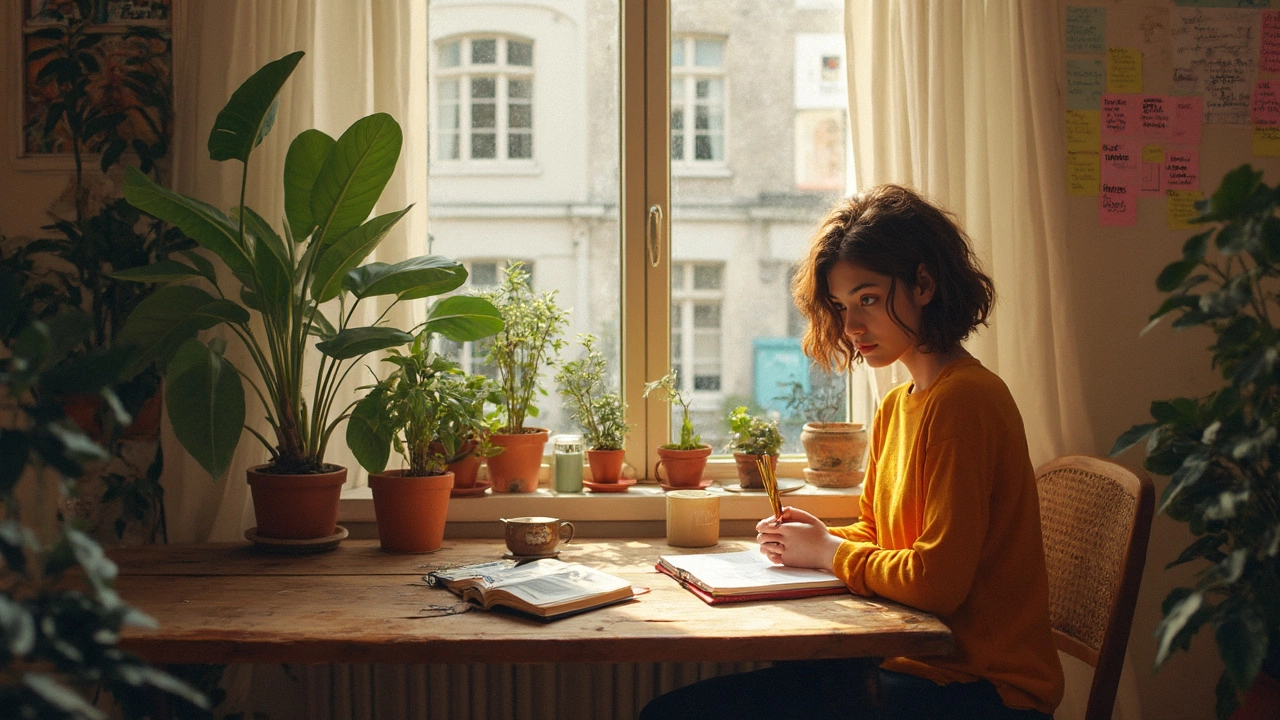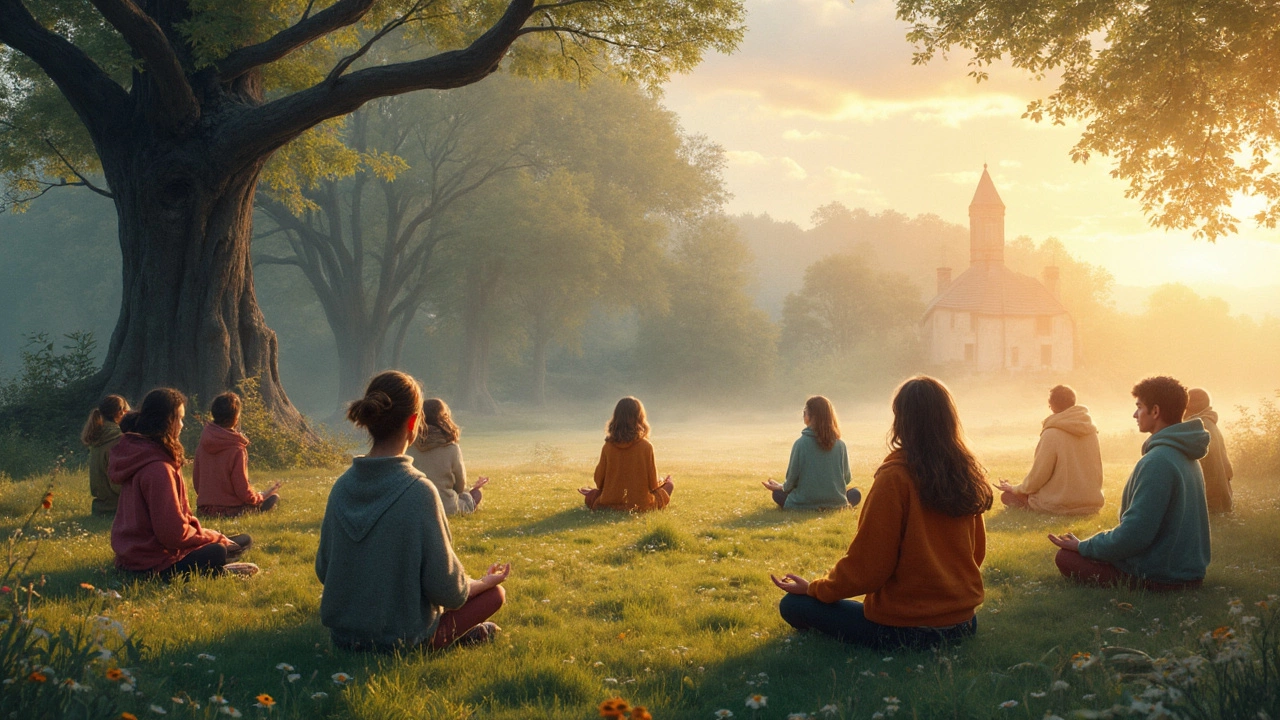Ever noticed how your brain’s basically a mess of tabs left open? Notifications popping up, someone’s waiting for a reply, your to-do list growing legs and chasing you? Spiritual mindfulness isn’t some mystical fix only gurus living on a mountain can pull off—it’s a practical skill. While ancient texts talked about enlightenment and inner peace, neuroscientists these days literally scan what happens inside the mind. Turns out, being spiritually mindful reshapes your brain for the better, making stress less bossy and joy a lot more accessible.
What Does Spiritual Mindfulness Actually Mean?
It’s easy to confuse spiritual mindfulness with just “thinking positive.” That’s not it. The real deal? It’s about being fully awake in this moment, tuning your awareness into here and now, but also feeling connected to something bigger, whatever that means to you. Maybe that’s the universe, nature, God, or just a sense of deeper purpose.
Mindfulness has roots stretching 2,500 years back—think of the Buddha in northern India. But the word “spiritual” changes things. That bit is personal. It’s not about subscribing to any set belief but weaving deeper meaning into everyday attention. A Harvard study in 2023 found that people who practiced both mindfulness and gratitude together reported a 29% boost in their sense of meaning compared to just mindfulness alone. Fascinating, right?
If you’re wondering whether you’re truly being spiritually mindful, ask yourself: Are you observing your thoughts non-judgmentally? Do you notice beauty around you? Do you catch the little moments—like the smell of coffee or the sun rising—before your mind slips into autopilot?
Simple Mindful Habits to Anchor Your Spirit
Spiritual mindfulness works when you tie it to regular habits, not just special rituals. But how do you actually start? Try these proven steps:
- Mornings Matter: Research shows that morning mindfulness routines lead to improved mood throughout the day. That could mean a five-minute breath meditation or even just sitting by a window, noticing nature as you sip your drink.
- Micro-Moments: You don’t need long sessions. Even pausing for three deep breaths before opening your email can train your attention. App developers caught on—over 2,000 mindfulness apps now exist, according to SensorTower, proving demand for quick, guided pauses is still high.
- Gratitude Check-ins: Try jotting down three things you’re grateful for. A 2022 paper published in the "Journal of Positive Psychology" found gratitude journaling alongside mindfulness doubled the chances of feeling connected to something larger than yourself.
- Walking with Awareness: Step outside. Feel your feet on the ground, smell the air, notice the light. Monks call this walking meditation, but honestly, your sidewalk works just fine.
- Meaningful Questions: Every night, ask yourself: Did I notice wonder today? When did I feel most connected?
Don’t stress over missing a day or doing it “wrong.” Every slip just makes you more aware, like tripping over your own feet and finally paying attention to the pavement.

The Science Behind Mindful Spiritual Practice
This isn’t just good vibes and incense. Neuroscience has caught up, and the research is wild. In a 2021 study at Massachusetts General Hospital, MRI scans of participants who did mindful meditation for eight weeks showed increased density in the hippocampus (linked to self-awareness) and reduced activity in the amygdala (which sets off your stress alarm). Mindful spiritual practices also help regulate the vagus nerve—your body’s built-in “chill out button.”
Ever heard about how mindfulness physically alters brain structure? Let’s look at some stats for the skeptics. Check out this table of measured benefits after an eight-week mindfulness practice intervention:
| Effect | Brain Area | Change (%) |
|---|---|---|
| Increased Gray Matter | Hippocampus | +7% |
| Reduced Reactivity | Amygdala | -5% |
| Improved Focus | Prefrontal Cortex | +6% |
But what does it mean for your daily life? People who stick with a spiritual mindfulness practice report not only less stress, but also more satisfaction, resilience, and even less fear of death, according to a 2023 Pew Research survey that tracked over 2,000 adults after taking up spiritual habits. The takeaway: you don’t have to move to the Himalayas or buy special gear. Just your mind, your breath, and your daily life.
Try combining old wisdom with scientific know-how. Use guided meditations (tons are free on YouTube), or dive into more spiritual versions that include affirmations or loving-kindness phrases. What matters most: consistency and intention. Think of it like exercise—doing a plank for ten minutes once won’t change much. Committing to just a few minutes daily, though, can reshape your inner world.
Finding Your Own Spiritual Mindfulness Path
There’s no single recipe, and that’s actually the magic. Some people feel closest to their own spirit or a higher power when they’re hiking in the woods, while others unlock the same connection through journaling, music, or even volunteering. The trick is trying what makes sense for you and noticing what sticks.
Maybe chanting a mantra feels forced, but listening to chimes or nature sounds clicks. Or perhaps lighting a candle before starting your day marks a pause, reminding you to show up fully present. Sometimes rituals help. Other times, spontaneity does the trick—spotting a sunset, stopping to really feel it, letting a sense of awe flood in. Awe, after all, triggers a physical response (a 2023 UC Berkeley study showed awe reduced inflammatory markers in the bloodstream for days afterward!).
If you ever think this stuff is a luxury, keep in mind: even frontline nurses reported more resilience and job satisfaction when they brought tiny mindful rituals into crowded shifts, according to a 2022 New England Journal of Medicine survey. So spiritual mindfulness isn’t about dropping everything to seek enlightenment—it’s about infusing ordinary moments with meaning, no matter how busy or unpredictable your life is.
- Set reminders—sticky notes, app notifications, or a coffee mug that nudges you to check in with yourself.
- Join a group, book club, or even an online forum. Community boosts accountability and makes the journey less lonely.
- Track your practice. Apps or old-school paper journals both work.
- Stay curious. If one practice feels stale, pivot. Explore new traditions, listen to different music, or take a different route on your walk.
One last thing: there’s no finish line. Spiritual mindfulness is a lifelong experiment, not a fix-it project. You’ll have days that feel as scattered as glitter and others where peace sneaks up on you when you least expect it. The more you return to your practice, the more natural spiritual mindfulness becomes—like flexing a muscle you never realized you had.
